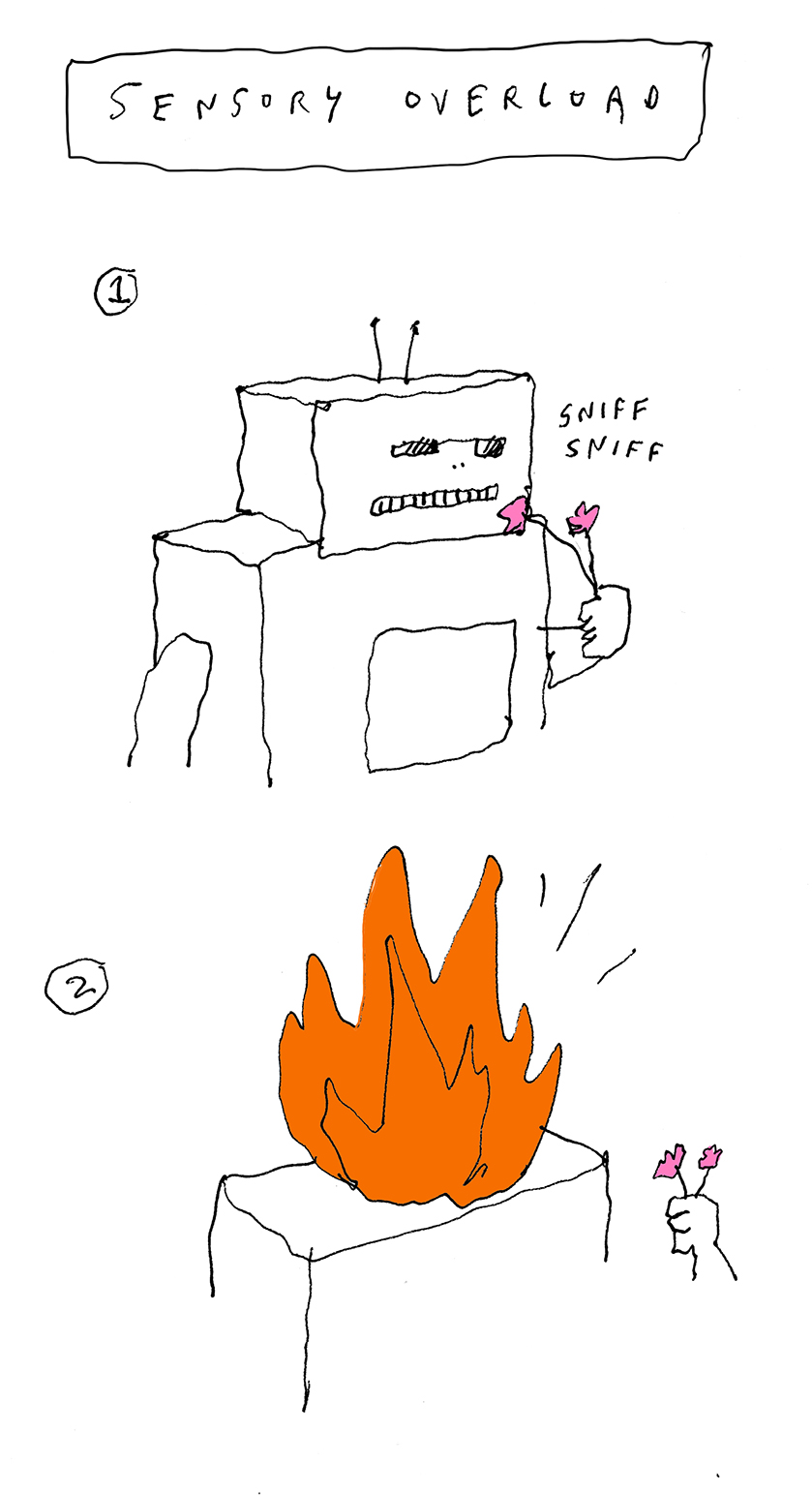New York City, November 26, 2017
 ★★★ Great blocks of sun and shadow moved over the buildings and across the sky before the clouds receded and complete sun arrived. Light got into the narrow space between the still-leafy trees and the building fronts. The coffee shop had put up a vestibule. A woman and child wore almost identical olive parkas, hers with a much more lavish fur treatment on the hood. A sheet of gray spread over the afternoon, untucked at the north or west corners but heavy enough to sink a chill into the playground. The cloud layer was so high that three airplanes could pass under it at once at different altitudes. The late light got up under it, spreading pink lowlights and purple highlights over the upside-down topography. When the sky overhead had subsided to mottled blue and gray, the south-southwest was still flaming orange, slashed with even brighter contrails.
★★★ Great blocks of sun and shadow moved over the buildings and across the sky before the clouds receded and complete sun arrived. Light got into the narrow space between the still-leafy trees and the building fronts. The coffee shop had put up a vestibule. A woman and child wore almost identical olive parkas, hers with a much more lavish fur treatment on the hood. A sheet of gray spread over the afternoon, untucked at the north or west corners but heavy enough to sink a chill into the playground. The cloud layer was so high that three airplanes could pass under it at once at different altitudes. The late light got up under it, spreading pink lowlights and purple highlights over the upside-down topography. When the sky overhead had subsided to mottled blue and gray, the south-southwest was still flaming orange, slashed with even brighter contrails.
Revenge is Like Chowder, Make Sure You Get the Right Kind
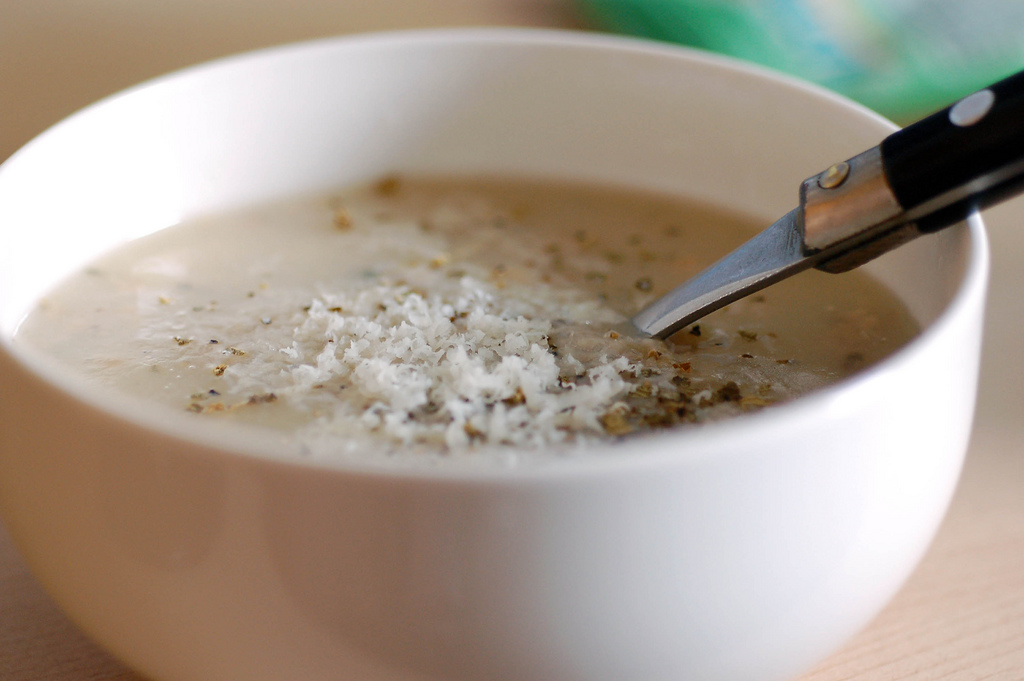
Image: Timothy Tsui via Flickr
“Someone at work has done me wrong. What’s the best way to get revenge?” —Avenging Avery
Work is the worst! At our workplace we do the lousiest things for the smallest of reasons. People are always ratting you out. At one place I worked there were millions of cans of Progresso New England Clam Chowder. This, it seemed to me, was the best perk of anyplace I ever worked, employee discounts included. If they were cans of Manhattan Clam Chowder, I would have left them alone. Manhattan Clam Chowder is my Kryptonite. It shouldn’t even be a thing, New Yorkers are just too stubborn to admit that New Englanders have beaten them at anything. But in the clam chowder department it’s not even close. New England Clam Chowder is creamy, warm and delightful. Manhattan Clam Chowder is clams in tomato soup.
So like 3 times a week, I made Clam Chowder for myself. I was in Chowder Heaven. Until, predictably, someone ratted me out. It wasn’t like it was their chowder either. Supposedly the crazy old man we all worked for had gone through a ‘White Food Phase.’ I got one of those ‘See Me’ notes and the guy went wild on me eating his chowder. He had a pretty good way of making me feel like a complete turd even on a good day. The Free Chowder Stage of my life had come to a halt. I was a chowder thief. For years, I didn’t eat chowder. Most of the time I buy Chunky Chowder now. Even seeing those blue cans of Progresso Chowder brings up a feeling of dread in my gullet. And I got them for years for free, I don’t feel like paying $2.50 a can or whatever. I’m more of a Chicken Soup guy now, anyway. And that is how I got revenge on Progresso New England Clam Chowder.
The Anthology of Underrated Herbs
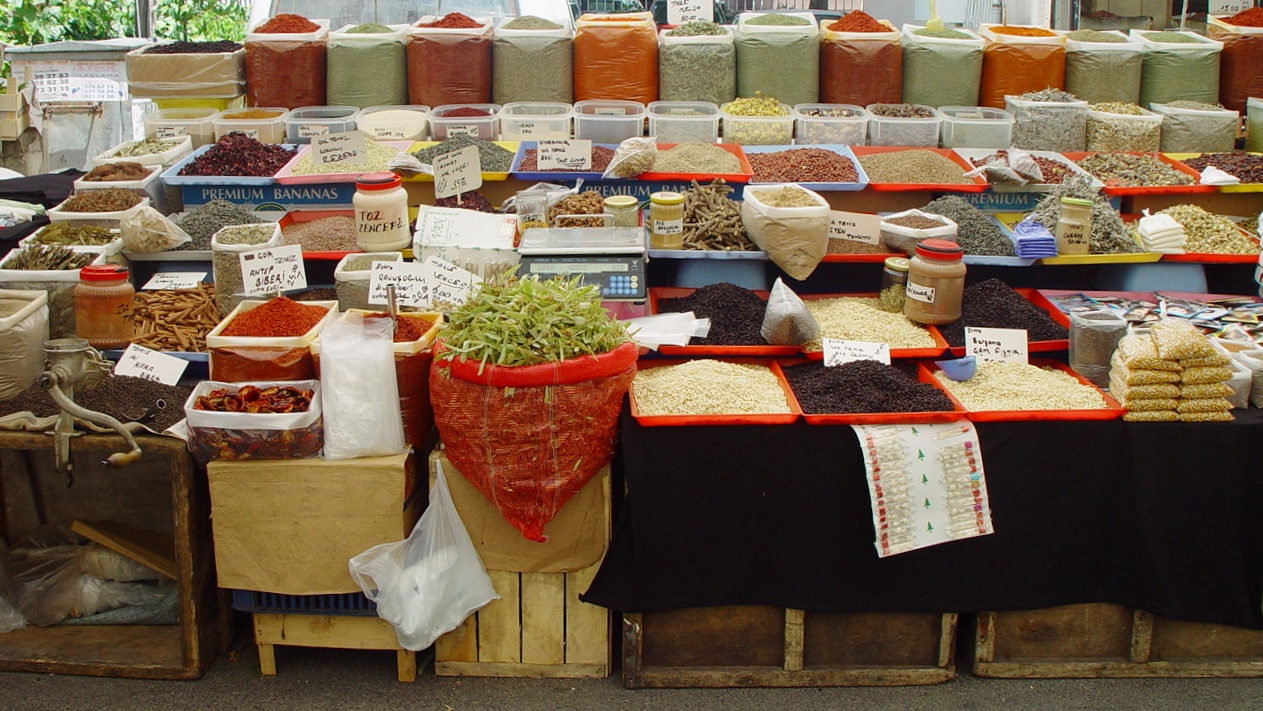
Image: one2c900d via Flickr
Welcome back from that brief holiday break. Ready for Christmas? Too bad. It’s here, and for the next four weeks all it is is bad sugar cookies and holiday parties. Take some time to ease back into the news cycle, and give yourself a break. You can’t read everything, so choose wisely. Might I recommend The Awl’s holiday series, The Anthology of Underrated Herbs? You can find the whole collection here.
Here’s the whole lineup: Samantha Sanders on dillweed (as an insult), Allison Stockman on asafoetida, Dan Nosowitz on amchur, Dayna Evans on Kalustyan’s, Bobby Finger on Julio’s Seasoning, Casey Johnston on ketchup (as a pickle), Megan Reynolds on peppercorns, Jo Livingstone on aniseed (and other licorice-flavored horrors), Fran Hoepfner on putting paprika on cottage cheese, Owen Phillips on Instacart spice orders, Laura June on tarragon and the nature of recipes, Katia Bachko on seltzer with bitters, Bryan Washington on achiote, Kenzi Wilbur on piment d’Espelette, Kristi Coulter on sumac, Rebecca McCarthy on Tony Chachere’s, and Brent Cox on spice cake.
May you consume them in good health!
Go-Kart Mozart, "When You're Depressed"
Weren’t we just here? Wasn’t it moments ago that we were waking up to a new week, full of dread and barely able to drag ourselves to the starting line? Didn’t we just complain about how exhausted we were and wonder how much more we could take? I guess the good news is I can copy and paste this exact block of text over and over again until it finally all comes down, because we live in a world where it’s always like this now. Here’s some music. Enjoy.
New York City, November 21, 2017
 ★★★★ The sunlight was so low as to make everything confusing, a tangle of long shadows and glary reflections. The temperature had lurched up again to a qualitatively different kind of day than the cold one before. At late lunchtime the sun was going sideways into storm drain gratework and lighting up the thickness of it. The warmth of it landed down on the lower back like a heating pad.
★★★★ The sunlight was so low as to make everything confusing, a tangle of long shadows and glary reflections. The temperature had lurched up again to a qualitatively different kind of day than the cold one before. At late lunchtime the sun was going sideways into storm drain gratework and lighting up the thickness of it. The warmth of it landed down on the lower back like a heating pad.
Two Prokofiev Pieces To Get You Through A Holiday Weekend

I’m having such a good time reading about Prokofiev, so much so that I do not care any longer if Prokofiev month feels like a chore to readers. Prokofiev, perhaps even more so than composers I’ve previously focused on, lived and wrote throughout such a transitionary period in world history––the first half of the 20th century––that trying to encapsulate a singular style or motif or theme feels nearly impossible. Though he was ignorant to politics and widely uninterested in the, uh, general insanity of the various Russian revolutions, Prokofiev often found himself between musical styles and influences. As a young and impulsive artist, freshly out of his conservatory training, it was hard for him to nail down what precisely made him Prokofiev.
This week, there are two different pieces I want to focus on, both of which illuminate different sides of Prokofiev’s creative personality. The first is known as the Scythian Suite (all of the music today comes from Prokofiev: The Complete Symphonies, London Symphony Orchestra, 2013) which was an adaptation of a failed and relatively disliked ballet that Prokofiev wrote earlier in his career known as Ala and Lolly. Both the ballet and the suite are meant to depict the Scythians, a Eurasian nomadic people from modern-day Iran. They were widely present across parts of Russia, Ukraine, and even China some several hundred years ago (more than one thousand years before Prokofiev was writing about them).
Spice Cake
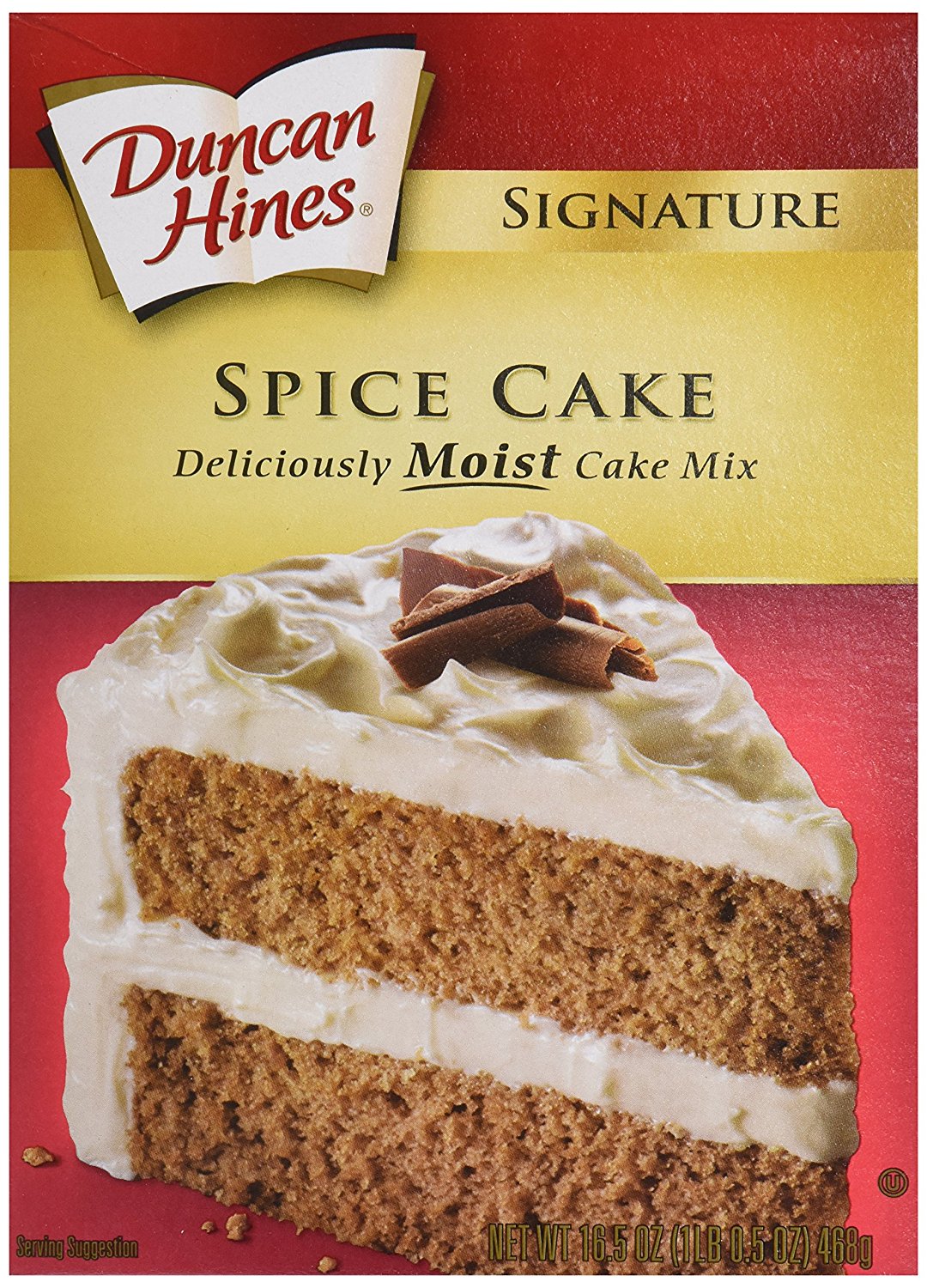
Spice cake was the best cake. The other kids thought that this was not the case, and argued for chocolate cake, they were wrong; spice cake was the best cake because I was six years old, it was my favorite and hence, it was the best cake. Not a carrot cake, not a pretender spice cake with bits of nuts or gourds in it, but a simple spice cake, with a cream cheese or butter cream frosting from the little plastic packet at the bottom of the box. Chocolate cake was everywhere. It didn’t even rate. Plus? No spice.
A thing to know about that time and place—West Virginia, late Q3 of the 20th Century—was that it was not a place one would encounter a wealth of herbs and spices. Even the non-box-mix cooking that might happen in my family, the drop biscuits and the minute steak and the chicken dumplings, relied solely on salt, black pepper and the applicable fat/shortening for flavor. Spice cake, it had spice. That hooked me, whatever this spice was.
In Defense of Tony Chachere's
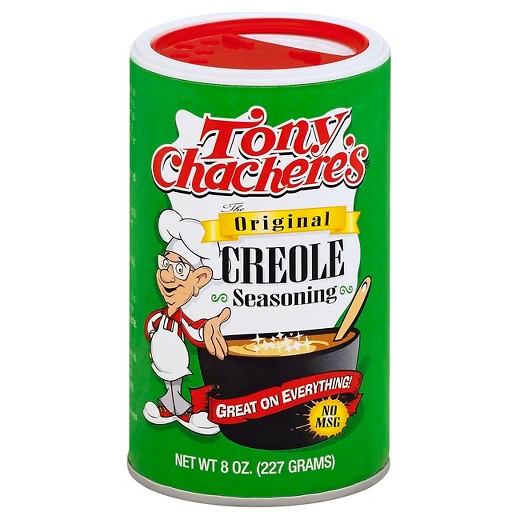
When I first encountered Tony Chachere’s Original Creole Seasoning (pronounced SAH-shur-ee) I was twenty years old and living in Lake Charles, Louisiana—a city off of I-10, made infamous by the (very douche-y) Nic Pizzolatto of True Detective as “one of the easiest places to get your ass kicked on the Gulf Coast.” Lake Charles is also the birthplace of Lucinda Williams and the title of one of her saddest and most famous songs (about an ex-boyfriend.) My ex-boyfriend grew up about a half hour south of the city and in the spring of 2010 he and I lived with two friends and one enemy in a dingy housing development called the Fleur de Lis Apartments. That’s not a typo, they misspelled Fleur de Lis.
We were extremely poor, but young enough that it usually felt comical. Everyone made minimum wage, working in bar kitchens or at a motel called Inn on Bayou and shifts were unreliable. Our friend John Paul (“Not named after the Pope”) was in the habit of snacking on expired MREs left over from Hurricane Ike. We had two movies, Boyz n the Hood and Willow, and I remember them playing almost constantly in the background. When we went to New Orleans for Mardi Gras we put down blankets and crashed in the flatbed of John’s truck. It rained. Soaking wet and freezing, we ended up sleeping in an empty horse stable.
Ten Points in Praise of Sumac
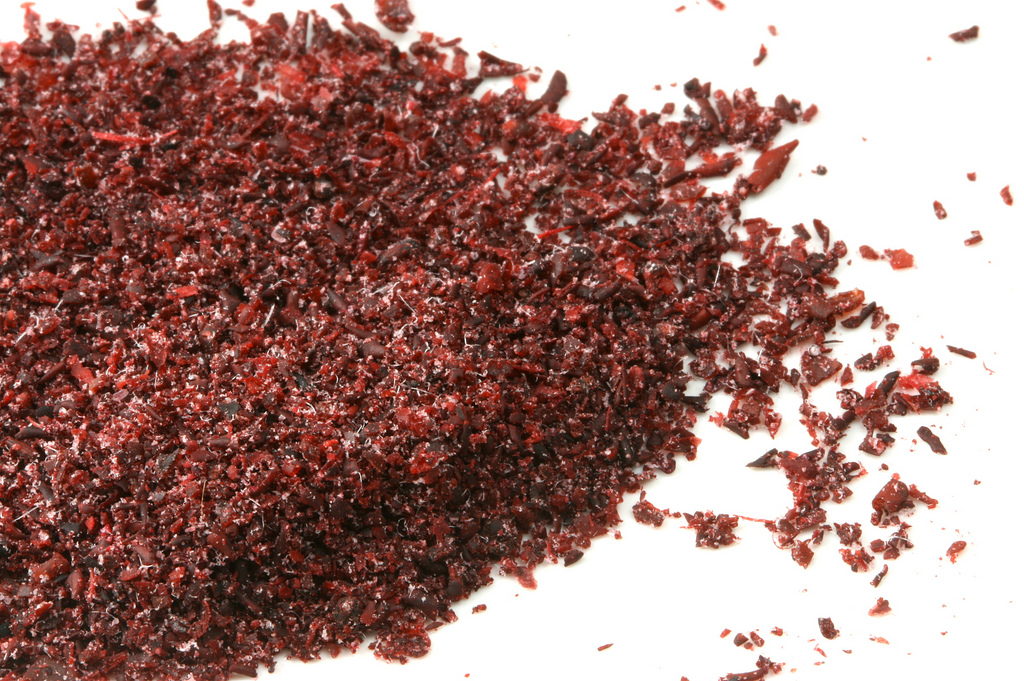
Image: Steven Jackson via Flickr
- Sumac is a berry that tastes like a powdery lemon, a soft bright lime, a sour flower.
- Sumac is the flavor of the Midwest. My Midwest, anyway. Southeast Michigan has America’s most concentrated population of Arab-Americans, and small Middle Eastern restaurants can be found in any grubby strip mall. Order mana’eesh or hummus or grilled lamb and odds are it will come sprinkled with powdered sumac, a little tang to offset the earth of the rest. When I moved to Seattle, people asked if I missed the Midwest. “I miss the food,” I said, and they gave me funny looks.
- Sumac is red, but not a trite red. It’s a little purple and a little brown, too. I love red lipstick but fear looking costumed, like I am going to see my sailor off to war, or selling ten-cent dances. Sumac is not that kind of red. It’s moody verging on difficult, a quality I like in colors and mouths.
- Here are some things to do with sumac: sprinkle it on popcorn or cantaloupe or roasted Brussels sprouts. Mix it into yogurt and use it as a sauce for chicken or vegetables. Put it on your finger and lick it off. Stick your tongue in the bottle. Sumac is best raw. Do something raw with it.
- They say lemon zest mixed with salt is a good substitute for sumac. They lie.

